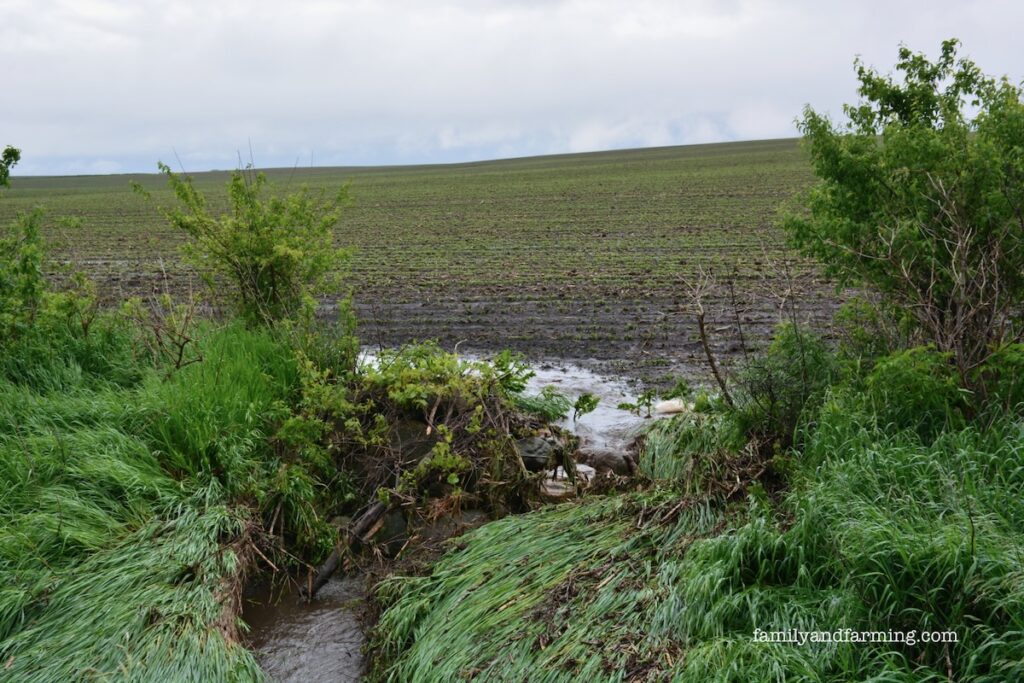I have to warn you that some of the photos in this post are disturbing.
We woke up Friday to a tornado warning and spent an hour in the basement. And then it rained heavily on very saturated soil, causing fields to flood. Except ours, as they were protected with waterways and buffer strips.
Field Waterways & Buffer Strips
Looking at our fields we see our waterways handled the excess water very well. We are pleased to see that there is no soil washing down into our ditches or toward our creek. If you look at the featured photo above of our fields, you see a zig-zag of green grass. These waterways are 30-40 feet across, planted with a “waterway mix” of Orchard Grass, Brome Grass and Timothy Grass, for a total of 5-6 acres of waterways and buffer strips on our farm. Here’s a blog post with details about our waterways.
Soil Erosion
We take a neighborhood tour to survey possible damage. We don’t like what we see. The soil devastation we see is disheartening, with deep ruts of soil flowing into the ditch. Our neighbor is only one example. We have no idea why they wouldn’t use the practice of waterways and buffer strips, but we know these conservation practices are helpful. There are many farmers across the world who don’t have waterways and buffer strips to conserve soil. I’m assuming world-wide soil loss is unbelievable. It’s hard to fathom isn’t it?

Waterways are designed to follow the curves of the land and the flow of water, to slow and divert water, to keep soil in the fields. Without waterways, when there is lots of rainwater, fields turn into muddy streams, pulling soil into rushing water, to flow into creeks, that pour into streams, and then rivers, pulling away soil to never return. That soil is gone forever.


What Are Some Additional Ways to Protect Soil?
The question you may ask, “Are farmers required to install and maintain waterways to keep their soil from eroding away?” Not really.
There is a CRP program (Conservation Reserve Program) that our farm has been enrolled in since the 1990’s, with around 24 acres set aside to protect the creek that runs through our farm.
This creek takes in the water that drains down from our farm and many other farms surrounding our area. This creek then feeds into a small river, that ultimately flows into the Mississippi.

Buffer Strips in Action

We drive down the road to make sure our buffer strips have held our soil and stopped water properly. Buffer strips are designed to stop soil and water from flowing into the ditch. This buffer strip is about 20-25 feet wide running from one end of our farm to our building site. The buffer strip has held and there is nothing to see in the ditch.

Franklin Delano Roosevelt said, “The nation that destroys its soil, destroys itself.” It’s hard to watch soil loss happen in front of our eyes. We can only hope that others can see this loss and try to stop this destruction before any more topsoil washes away.
Be Blessed!
Discover more from Family and Farming
Subscribe to get the latest posts sent to your email.

